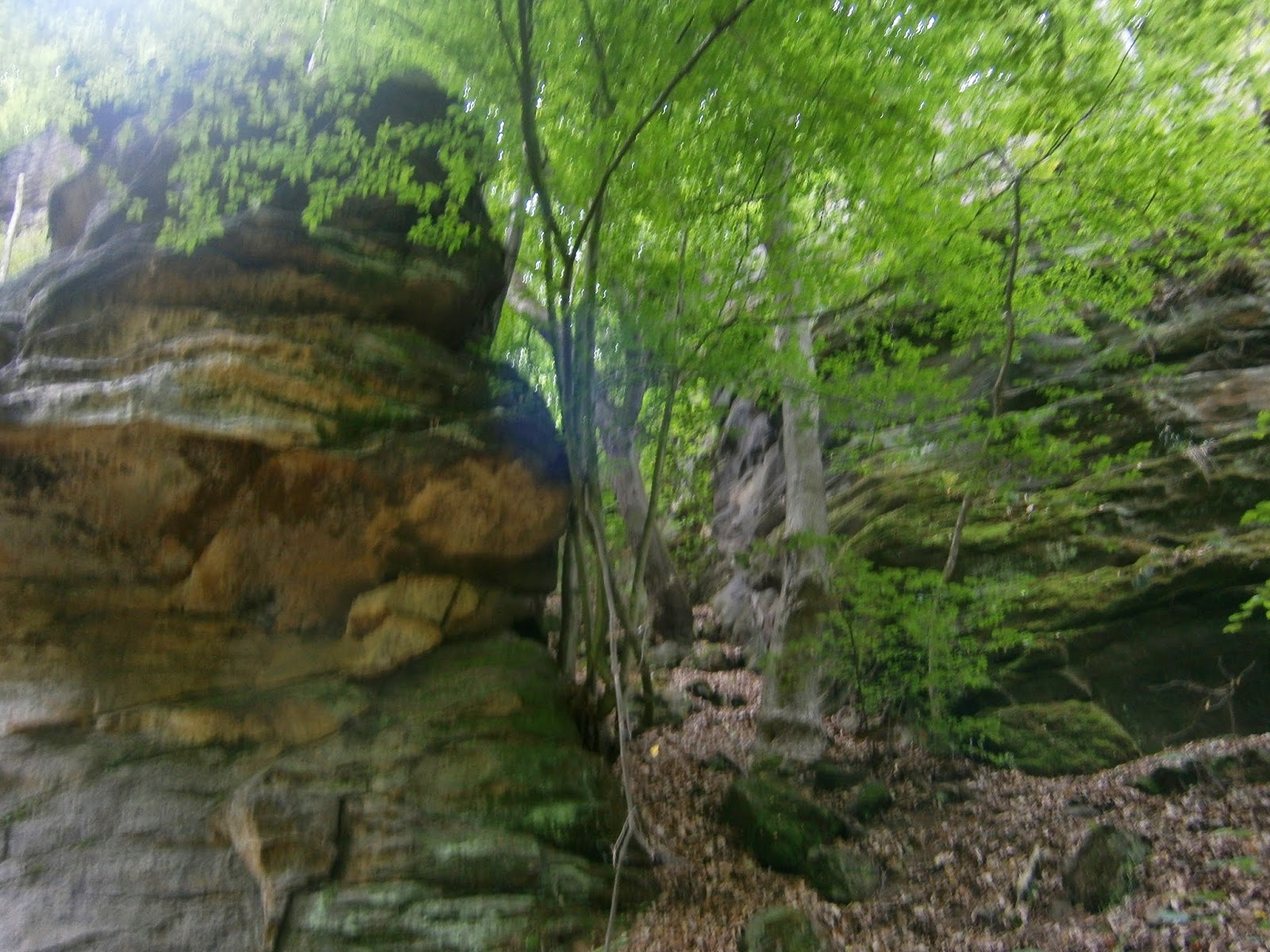But any Wagnerian spirit had failed to show and I was signally failing to commune. I did hear one lone horn outside the window one warm evening but that was after Germany hammered Portugal 4-0 in the World Cup. If Wagner approved of that result, he certainly wasn't telling me.
Action was needed. I decided to trace the composer's steps on some of the hikes that he undertook. Time, construction and modern transport have rendered some of his adventures quite banal but there was one that intrigued me. About 45 minutes from the Lohengrinhaus was the Liebethaler Grund - a "narrow, deeply incised valley of the Wesenitz river" according to its Wikipedia entry. Since 1933, the biggest Wagner monument in the world was constructed in this dark, dramatic valley that marks the beginning of that remarkable, surreally mountainous region of Saxony known as "Saxische Schweiz" or "Saxon Switzerland". I'd tried once before to find the monument but I was travelling by car with a German friend and we got nothing but shrugs or dead-end directions. I had, however, seen a signpost pointing to a "Liebethaler Grund" trail so I set out one Saturday afternoon. I walked past the Schloss and past pretty half-timbered houses their English-style gardens opulent with delphiniums, poppies, lupins and loose-strife. I crossed a busy highway and walked along an unpaved road, passing a few more fairly banal modern houses when suddenly, dramatically, the landscape changed.
 Massive, craggy brown rocks rose up on either side of the road. Older, wearier looking houses huddled against them. A loud, powerful stream
Massive, craggy brown rocks rose up on either side of the road. Older, wearier looking houses huddled against them. A loud, powerful stream carved its way through the hamlet. A little bridge led into deep woods. Without thinking I crossed it, headed towards the woods but thought to check with an old man who was passing. "Sie sind falsch," he replied and my long-forgotten 'o' level German told me I'd gone the wrong way. He pointed back to the main road. I managed to ask if there were a pub or caf in the area. "Not in the east," I understood him to reply. And then I think he added, "They're all dead here." And off he went.
He was right - the little village that had managed to squeeze into the ravine between the rocks had only a few houses. I walked on, asked a fisherman unloading his van and he pointed to another path into the woods, explaining that it was a good 25 minute walk but very beautiful. Then he frowned, thought for a minute and added something else that my German was not fluent enough to understand.
This path followed that same turbulent stream. The rocks rose higher and closer. The forest was thicker. I'd heard a few things about this monument, hidden deep in these woods. An American Wagnerian had told me he found it 'creepy' because of its scale. It's the biggest Wagner monument in the world, standing 12.5 metres and, as he emphasized, was brought to this secretive spot in 1933. However, as Christian Muehne, the curator of the Lohengrinhaus pointed out, it had been planned to stand in Dresden but run into the usual city council conflicts. And even if it was installed when the Nazis were coming to power, they had not, he emphasized, paid a penny towards it.
Now I was drawing closer. I did not yet know if the monument was 'creepy' but the forest certainly was despite its beauty. I was alone in this dark chasm - the fisherman had followed at a safe distance but he was no longer visible so it was just me and the birds and the high dense trees and those immense rocks.
Wagner came here long before he wrote any of "The Ring" and it's tempting to think that when he walked here, those lofty rock summits inspired his "Walküre". His Siegfried would have found forest birds galore here although the busiest, most visible bird on my walk was a dipper, bobbing across rocks on the stream and diving down into the coppery depths.

I'd come to what looked like the end of the path. A small boardwalk with a rail, curved away from me and I increased my pace quite sure that I would turn this corner and confront 36 foot of difficult, complex, German genius. But instead I was faced with a delapidated bridge across what was now a rushing river - and a locked gate with a sign that I now realized said more or less what the frowning fisherman had tried to tell me an hour earlier. T
he bridge was unsafe and crossing was forbidden . So there he was, the colossal genius in stone - so near and yet so far.
Later that evening when I returned home and translated the rest of the sign, I understood that there had, in fact, been an easier route by driving further along the main road and taking a short walk and crossing another, safe bridge. Oh well, Wagner always did make you work for his rewards. And, in one way or another, it is always worth it.


No comments:
Post a Comment